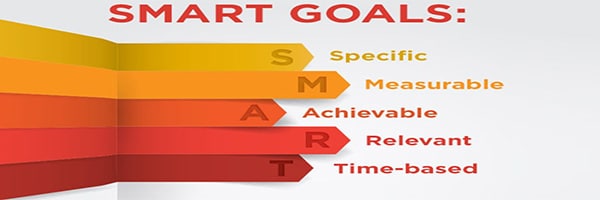This article is for you if:
- You have a New Year’s resolution, but you’re struggling to make it stick.
- You want to learn how to create healthy, sustainable lifestyle changes.
It’s important that we’re clear right off the bat, because if you google “how to keep a New Year’s resolution”, you’ll find hundreds of blog posts that say the same things over and over – make a plan, follow it, motivate yourself, and so on.
And while there’s nothing wrong with that advice, it’s often vague and doesn’t really lead to any long-term lifestyle changes.
But these changes are exactly what we want. We don’t want to achieve our goal, then immediately go back to our previous self-sabotaging behaviour.
We want to create a positive change that lasts, so we can build upon these lifestyle changes and create the life we really want.
In this blog post, you’re going to learn how to make these changes, starting with your New Year’s resolutions.
Let’s take the first step together.
Fun fact: Some of the top New Year’s resolutions for 2020 are trying new things, losing weight, and exercising. (Source)
Step #1 – Reflect on the past year.
Self-reflect: What positive and negative experiences did you go through last year?
The best way to self-reflect is to sit down with a pen and paper and write about whatever comes to mind.
However, because your goal is keeping your New Year resolutions, you’re going to ask yourself a series of specific questions, that will help you identify both the positive and the negative experiences you went through in the last year.
These include:
- What is the most important lesson I learned last year?
- What goals did I achieve?
- How have my priorities changed?
- Did I face any of my fears?
- If I could go back one year from now, what would I do differently?
- What was my most positive/negative experience?
- What positive/negative habits did I adopt?
Discover and embrace your positive/negative behaviour patterns.
Imagine two people create a New Year resolution to start lifting weights. Who do you think will have it easier?
- Person A, who has an active lifestyle, does other sports and is generally lean and muscular.
- Person B, who has a desk job and lies around on the couch all weekend.
You already know the answer.
By going through this process of self-reflection and self-realization, you’ll discover which pre-existing habits and behavioural patterns are (a) working for your new goal and (b) which are working against it.
If you want to keep your New Year resolutions, you have to be aware of these behavioural patterns, you have to embrace them, and you have to use them to your advantage, by focusing on the ones that contribute to achieving your goal and avoiding the ones that don’t.
Use last year’s lessons as momentum to stick to your New Year Resolutions.
There’s never a wrong time to stop, look back, and think about how you can apply the lessons you’ve learned in the past to your current situation.
That being said, creating a New Year resolution is the perfect opportunity to do that. The statistics agree – while (on average) 67 per cent of people create a New Year resolution, half of them head into it thinking they will either forget or lack the willpower to achieve their goal.
That’s why going through this process of self-exploration will help you internalize the lessons you’ve learned and use them as leverage toward achieving the goals you set for the New Year.
Step #2 – Create a SMART New Year’s resolution.

(Source)
What if there was a formula that allows you to increase the chances of achieving your goals and making new habits stick?
Well, there is one! It’s called the S.M.A.R.T method, and it’s as close as you’re going to get to a blueprint for goal-setting success.
S.M.A.R.T goals are…
– Specific.
Your goal needs to be focused and have a tangible outcome. If you’re not specific, you run the risk of creating a goal that’s too vague to achieve. Being specific helps you not only visualize the exact outcomes you want to achieve, but it also lets you identify the resources you’re going to need along the way.
– Measurable.
You need to be able to evaluate your progress and success as you go. If your goal isn’t measurable, it’s by definition, unclear. In other words, answer the question “how will I know when I’ve achieved my goal?”
– Achievable.
Your resolution should be exciting and challenging, but if the goal isn’t realistic based on your current situation, your willpower level will most likely plummet in the first week.
By reflecting on this aspect of your New Year goal, you’ll learn to identify (and then avoid) potential barriers that will slow down your progress.
– Relevant.
Get real with yourself – is the goal you’re setting aligned to your values, and to what you perceive to be worthwhile?
If it is aligned with you and what you really want in life, there’s all the more reason to make it a priority.
– Time-bound.
Every goal needs a target date. However, you should keep in mind that your goal isn’t something you stop chasing once it’s achieved.
The underlying premise of a New Year’s resolution is to establish a new, better, healthier pattern of behaviour, and your goal’s deadline should be the time you need to turn these new behaviours into habits.
Remember: It takes 21 days to create a habit, and 90 days to establish a lifestyle change. Read more about the 21/90 rule here.
Step #3 – How to make your New Year’s resolution stick.
So far, you’ve self-reflected on your situation, you’ve embraced everything you’ve learned, and you’ve set your New Year’s resolutions. Awesome!
However, there are three things you can do that will skyrocket your chances of keeping your resolutions and making these new, positive life changes stick. Here’s the simple process:
Break your big goal down into bite-sized micro-habits.
For example, you want to get leaner, stronger, and healthier.
You’re not going to start this journey by immediately jumping on some bodybuilder coach’s plan for maximizing muscle gains. That’s a no-no.
If you do this, chances are you won’t have the willpower you need to go through with it, and you won’t successfully establish this habit for yourself.
What you need to do is break this goal into smaller actions that (1) are easier to commit to and (2) contribute toward building a set of micro-habits.
–
Example: You want to start eating healthy. DON’T make the decision to cut out all your favourite foods and never taste sweetness again.
Instead, create three micro-habits and set them as daily goals.
- Learning about new, healthier foods.
- Eating a fruit/vegetable with every meal.
- Start a diet journal.
*The goal here is to make them as easy to commit to as possible. When these three micro-habits are established, you have the perfect foundation for a positive lifestyle change that ultimately results in your end goal – eating healthy.
–
Commit to your micro-habits for 21 days.
Once you’ve broken your goal down into micro-habits, it’s time to start taking action!
Commit to these micro-habits for 21 days, and you’ll see how focused and motivated you’ll be to solidify that habit and make that positive change in your life.
At this point, creating a new habit no longer takes willpower!
You’re effortlessly driven by the force of habit toward making better, healthier choices that are aligned with the goal you’re trying to achieve and the person you’re trying to become. Hurray!
Pro tip: research proves that journaling about your goals (and tracking them every day) dramatically increases your odds of achieving them.
Reward yourself.
The last and final aspect of keeping your New Year’s resolution is to reward yourself for your wins.
When you complete a micro-habit, when you learn something new, or when you make any progress toward your goal, reward yourself.
Don’t be afraid to do so. Instead, be fearful of rewarding yourself when you don’t deserve it. Don’t reward yourself when your behaviour doesn’t match your ambition – at some point, it’s going to happen.
When you identify your current situation, you set a new goal, you break it down, and you reward yourself for all your micro-successes, you’re essentially re-programming yourself to achieve that overarching goal.
The moment you realize this simple process, the power of habit comes into your hands.
How you use it is up to you.
Use it to make your New Year’s resolutions stick. Use it to create healthy new habits. But whatever you do, use it to work toward a better, healthier, happier you.


